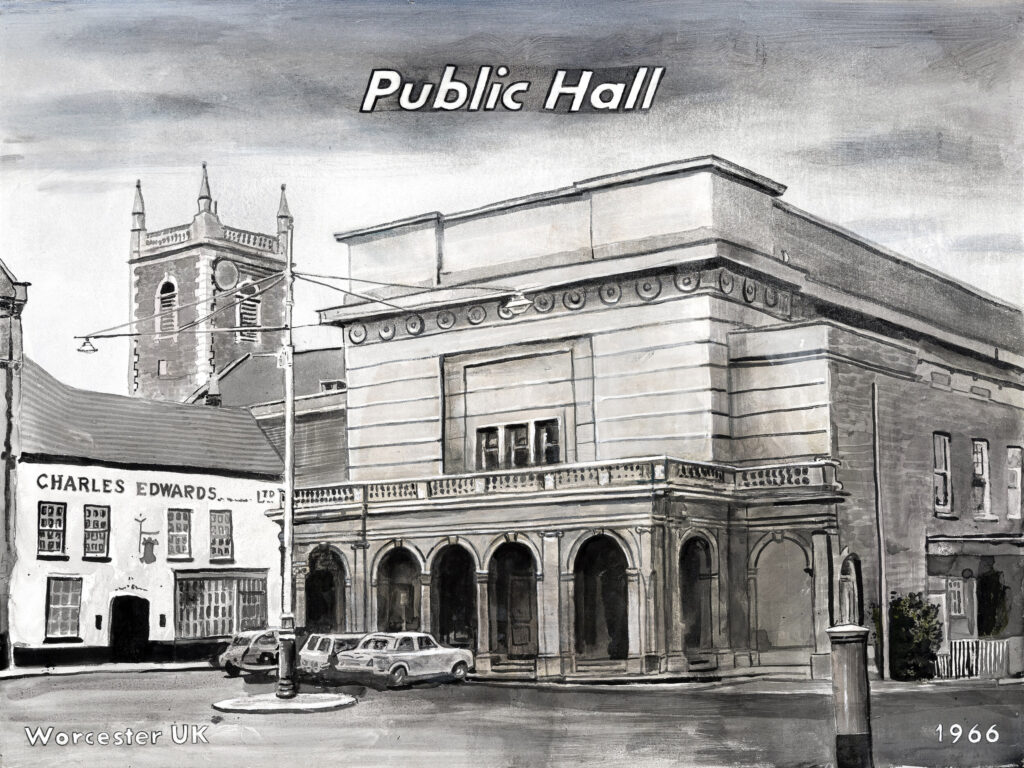Worcester, England, UK
Demolished 1966

During the 1950s and 1960s “the sack of Worcester” took place: a city demolishing its history in a hurry so a few people could make a small quantity of fast money. A slum clearance that was encouraged to get out of control. Replacing the Blockhouse, Worcester, the first home of Vesta Tilley, an Internationally famous Music Hall star, was understandable. But why remove the last remaining cathedral lich gate in the UK? The Public Hall was one of many Worcester buildings to disappear forever. It became a small car park. Sir Edward Elgar used to premiere his latest compositions there. Imagine how many millions of tourist dollars have been lost. The disappearance and absence of things is a subject I think about a lot. It keeps coming up in the films I watch. A documentary about forests being cut down or a drama that uses ‘gentrification’ as its theme. Or the use of the ring-tone in Alan Rudolph’s “Equinox”. People who make their money from property view maintenance as a cost. They’re running a business: it’s only about costs. Whereas knocking the building down, no matter how glorious it is, creates a space, a building site, that will generate money rather than soak it up. Plus, the council can replace poor tenants with home-owners. They pay the housing benefit for the first group. They can increase the council tax for the second. (I don’t think it has anything to do with these groups vote. Though they’re unlikely to vote for a party that’s trying to get rid of them.) Robin C.
The Public Hall was a music hall built on the north side of the Cornmarket in Worcester. Apart from musical entertainment by such luminaries as Jenny Lind and Dvořák, it was also known for its Saturday Penny Readings. Charles Dickens twice came to read his own works. By the 1890s it was the principal hall used for electioneering. During World War II, the building was used as a British Restaurant and Welcome Club in the evenings. Towards the end of its life the building was renamed The Majestic, and used for a variety of purposes. The hall was demolished in 1966 to make space for a car park. The painting is based on an uncredited photograph from cinematreasures.org.